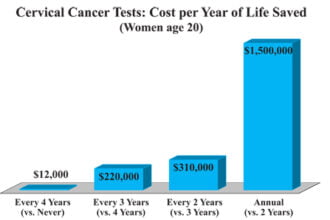Probably Not The One You’re Thinking About
Plus ça change, plus c’est la même chose. The 19th-century French author Jean-Baptiste Karr was right: The more things change, the more they stay the same. The Affordable Care Act (ACA) didn’t fix the most important health care problem for many women—trying to afford health care.
Probably Not The One You’re Thinking About
Plus ça change, plus c’est la même chose. The 19th-century French author Jean-Baptiste Karr was right: The more things change, the more they stay the same. The Affordable Care Act (ACA) didn’t fix the most important health care problem for many women—trying to afford health care. All kinds of care, not just reproductive care.
Two historical events are background for this post, though not intentionally. The Supreme Court of the United States, SCOTUS to its observers, heard arguments in King vs. Burwell on March 4th. The Court’s second Affordable Care Act (ACA) case also challenged fundamental parts of the law. King disputes the legality of most ACA-required insurance subsidies. If SCOTUS finds for the plaintiffs, the health insurance market will collapse in turmoil.
And this past weekend was the fiftieth anniversary of Selma’s Bloody Sunday. Six hundred civil rights demonstrators attempted to cross the Edmund Pettus Bridge on March 7th, 1965. Marching for voting rights, state troopers and police met the protesters and they were beaten, tear-gassed and turned away. The televised brutality horrified the nation. Five months later, on August 6th, 1965, President Lyndon Johnson signed the Voting Rights Act of 1965. In 2013, SCOTUS gutted the Act when it struck down a key provision. Section 5 of the law required specific states and municipalities seek Justice Department approval before changing their voting regulations.
Mention women’s health care rights now and the ever-contentious abortion question comes to mind. Followed by recent birth control battles (and here). Few give thought to care for pregnant women who hope to stay pregnant. And live. They get needed care. Right? No.
Loud clashes about abortion and contraception have drowned out the fact more American women are dying because of pregnancy now than a quarter-century ago. Lancet, the preeminent British medical journal, published this startling information first. That only makes the fact more disturbing. American publications should have shouted it from the rooftops.
The maternal mortality ratio (MMR) is a basic measure of a country’s health. The MMR is the number of women who die of pregnancy-related causes for every 100,000 live births. Most deaths occur during birth or shortly after, but the MMR counts deaths that happen up to six weeks after delivery. Maternal deaths are counted the same way worldwide.
Our MMR was 12.4 in 1990, 17.6 in 2003 and rose to 18.5 by 2013. In 1987, it was 7.2.
Only eight countries saw hikes in their MMRs from 2003 to 2013, the US among them. We’re in good company, though. Afghanistan, South Sudan and Belize also had more women die of pregnancy complications in 2013 than 2003.
The absolute numbers of women who die because of pregnancy is small. About eight hundred women in the US died of pregnancy complications in 2013. It’s our MMR’s rise that’s alarming.
Deaths And Near Misses
The leading causes of death during pregnancy in the US aren’t a mystery. Some differ from those in less-developed countries, some we share. Globally, women die of abortions, hemorrhages, infections and “obstructed labor” (babies too large for mothers’ pelvises or babies in wrong position for birth).
The top killers of mothers in the US are:
- Various types of heart disease (25.2%).
- Non-cardiovascular diseases, such as kidney disease (14.1%).
- Infections or sepsis (14.0%).
- Hemorrhages (11.3%).
- Blood clots in the lungs (9.8%).
The conditions that kill pregnant women and newly delivered mothers are the direct causes of death, listed on their death certificates. The true killer is often lack of affordable care.
That rarely shows up on death certificates.
Not all women die. There’s another group called “near misses”. These are women who suffer almost-catastrophic complications, but live to hold their babies. The Centers for Disease Control and Prevention (CDC) labels this condition “severe maternal morbidity” (morbidity is medical lingo for illness). About 52,000 women suffered such life-threatening complications in 2011.
Complications that push women into the intensive care unit also push them into the severe morbidity category. Illnesses such as heart attacks, kidney failure, adult respiratory distress syndrome and shock.
The rate of severe maternal morbidity is also rising. This rate counts the number of women who develop critical conditions while hospitalized for delivery for 10,000 deliveries. The rate was 74 in 1998-1999 and rose to 163 for 2010-2011.
Estimates are that half the deaths and much of the severe illness are preventable with good care. Good maternity care isn’t always easy to come by. For the usual reasons: cost and inequality.
Affordable Care?
The general public gives scant notice to maternity benefits. Pregnant women and their families don’t have that luxury. They must deal with the collision of expensive obstetric care and inadequate insurance.
The medical costs of a healthy pregnancy and delivery can easily top $20,000. Complications can double the fare. Just for mom. (Add an ill or preterm baby to the equation and costs are staggering.) National Public Radio ran a post on its Shots blog last month entitled “Pregnant And Uninsured? Don’t Count On Obamacare Coverage”. Phil Galewitz, who wrote the post, points to a glaring inconsistency in ACA. The problem, as usual, is in the fine print. Galewitz says, “The Obama administration often touts the health benefits women have gained under the Affordable Care Act, including the option to sign up for coverage outside of open enrollment periods if they’re ‘having a baby.’
But advocates complain that the special insurance enrollment period begins only after [emphasis Galewitz’s] a birth.”
Women lucky enough to time pregnancies to coincide with open enrollment may get coverage for care. Other moms can be left in the cold.
Having insurance is no guarantee of snuggling that new baby free of money woes. Authors JF Wharam, AJ Graves and KB Kozhimannil wrote an article (gated) earlier this year for JAMA (aka Journal of the American Medical Association). In “Navigating the Rise of High-Deductible Health Insurance: Childbirth in the Bronze Age”, the three authors talk about the realities of high deductible health plans when combined with the lowest cost or “bronze” health coverage sold on state exchanges. The bronze plans have low premiums but high out-of-pocket expenses. Women and their families owe a bundle of money by the time the bundle of joy settles into the bassinet.
 This problem will worsen in coming years. More employers offer only high deductible plans. People buying plans through the health insurance exchanges often opt for low premium, high deductible bronze plans. These seem affordable until the insured person needs care. The ACA now permits annual out-of-pocket expenses of $6600 for individuals and $13,200 for families. Typical bronze plans have deductibles of $5181 for singles and $10,545 for families. Those are steep costs for all but affluent folks.
This problem will worsen in coming years. More employers offer only high deductible plans. People buying plans through the health insurance exchanges often opt for low premium, high deductible bronze plans. These seem affordable until the insured person needs care. The ACA now permits annual out-of-pocket expenses of $6600 for individuals and $13,200 for families. Typical bronze plans have deductibles of $5181 for singles and $10,545 for families. Those are steep costs for all but affluent folks.
Millions of women can’t afford insurance. Many will be eligible for Medicaid, depending on where they live and their household income. But many will remain uninsured, scrambling to patch together care.
They pay the price other ways. Illness. Or death.
Seeing In Black and White
American health indicators are much worse for African Americans than whites. The MMR is no different. Black mothers are three and a half times (MMR 42.8) more likely to die in childbirth than white mothers (MMR 12.5). Detroit has an MMR of 58.7, higher than Libya or Vietnam. It’s more than double the rate of Kazakhstan (MMR 27.0).
African American women have three times the death rate from pregnancy complications compared to white women. Hispanic women have a lower maternal mortality rate, 14.9, than non-Hispanic white or non-Hispanic black women, for reasons not entirely clear. Latina mothers’ lower MMR is particularly baffling as fewer are insured than African American women.
A deeper dive into the data pool is disheartening. African American women don’t develop serious pregnancy complications more often than Anglo women. But they die more frequently. Black mothers have less access to prenatal care and higher rates of some chronic illnesses that make pregnancy riskier. The care they do receive may be poor quality.
Gregory Goyert, MD practices high-risk obstetrics at Henry Ford Health Systems in Detroit. Last year, when Lancet released the data, Dr. Goyert said, “Clearly, this is one of those examples where there is a glaring health care disparity.”
Life, Liberty and Human Rights
The rising American maternal mortality ratio is a human rights disaster. We’re in the midst of colossal health reforms. Thirty-four billion federal dollars invested in health information tech. Platoons of policy wonks jabbering about medical homes and accountable care organizations. Squadrons of clinicians debating how to “drive” patient engagement through patient portals.
While more women are dying in childbirth.
 And it may get worse. If SCOTUS finds for the plaintiffs in King, millions of Americans who finally have health care could again be left without. Many will be childbearing women. When the Court eviscerated the Voting Rights Act of 1965, the newly unburdened jurisdictions changed voting laws with lightning speed. The changes helped elect candidates opposed to the ACA and Medicaid expansion in 2014.
And it may get worse. If SCOTUS finds for the plaintiffs in King, millions of Americans who finally have health care could again be left without. Many will be childbearing women. When the Court eviscerated the Voting Rights Act of 1965, the newly unburdened jurisdictions changed voting laws with lightning speed. The changes helped elect candidates opposed to the ACA and Medicaid expansion in 2014.
Selma and the Supreme Court aren’t contrived backdrops to maternal mortality in 2015. They are the beating heart of the matter.
Pregnancy is not a rare condition. Childbirth is the leading cause of hospital admission. Almost four million women were admitted to American hospitals to deliver babies in 2010 (latest available data). Good, safe obstetrical care is not precision medicine. The principles of maternity care are straightforward and can be practiced successfully worldwide. Even here.








